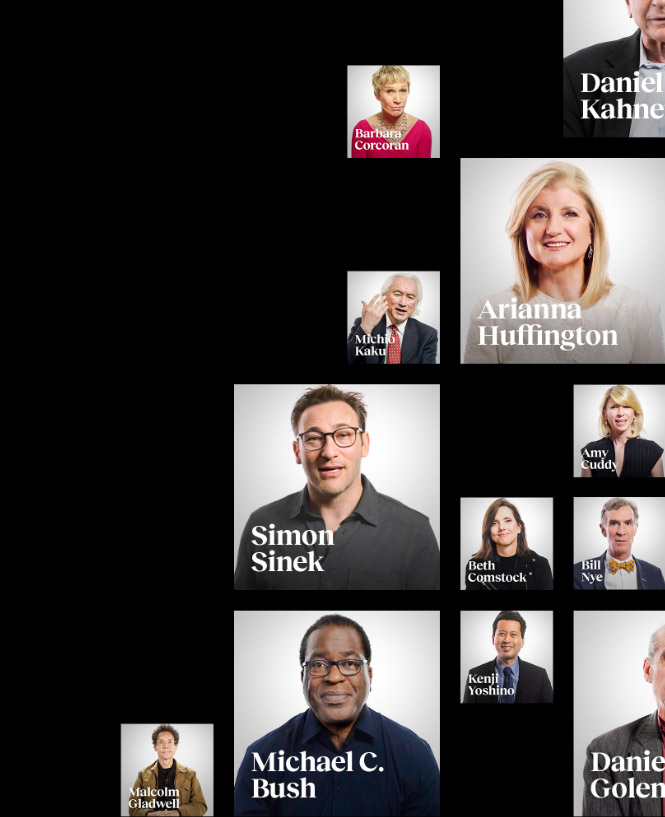How to find success with the 4 conditions of “intelligent failure”

- Failure should be avoided when it is risky and the costs are high.
- Intelligent failure occurs in a low-risk environment and leads to growth or new knowledge.
- Amy Edmondson, a professor of leadership and management at the Harvard Business School, shares her four criteria for failing intelligently.
A child’s bedroom is a shrine to failure. There’s the guitar gathering dust in the corner, the unfinished books forever shelved, the two-sizes-too-small karate gi hanging in the closet, and the magic set where half the contents disappeared (never to reappear again). Each is a sacrifice to the hobbies, subjects, and passions that were tried, failed, and ultimately abandoned.
And that’s awesome! Children enter the world with an innate desire to explore and experiment, and parents understand that failure will be an inevitable part of their growth. However, at some point — usually between high school and adulthood — we lose the sense that failure is necessary for achievement.
“There is a deep-rooted belief in our culture that success means never failing. That failure is unacceptable. That if I fail, it means there’s something wrong with me,” Amy Edmondson, a professor of leadership and management at the Harvard Business School, tells Big Think. “Of course, that’s nonsense. We all make mistakes, and failure is part of the journey towards success.”
Edmondson has studied failure in its various forms and concluded that there are three distinct ways to fail. Understanding the difference can help us rediscover how to fail in beneficial, less costly, and maybe even fun and exciting ways.
The types of failure to avoid
The first type of failure is “basic failure.” These are the slip-ups that occur from carelessness, distraction, exhaustion, or any number of other attention-snatching scenarios. They include a typo in an office-wide memo, forgetting your mom’s birthday, or reaching for the salt instead of the sugar when baking a pie.
Sometimes, the consequences of such failures can be colossal. Million-dollar court cases have hinged on the presence or absence of a comma in a contract. But this is atypical, and most basic failures end with pint-sized consequences and easy fixes. Your colleagues razz you for the typo, and you correct it. You apologize to your mom and buy her an extra-special gift. You throw out the pie and bake another (but not before reorganizing your kitchen containers).
The second type of failure is “complex failure.” These failures stem from multiple causes and can be unavoidable if those causes coalesce in ungovernable ways. For example, senior leaders at a company must make decisions despite a myriad of external and internal dynamics to account for. These dynamics’ unpredictable and ever-changing nature means some decisions are bound to fail.
However, complex failure can also occur when we have the knowledge to avoid it — or at least minimize the fallout — but we ignore the reality. The Great Recession of 2008, the Bernie Madoff scandal, and the Deepwater Horizon oil spill are all complex failures of this ilk.
Both basic and complex failures should be avoided when possible. They’ll happen anyway, of course. No one has perfect control of their life. However, we can sidestep many of these failures if we give ourselves the time, energy, and focus to act with care and forethought, especially if the task is important — say, if you’re reviewing a million-dollar contract for grammar, for example.

The right kind of wrong
The third type of failure is “intelligent failure.” These are the failures that teach us something new or improve us in some fashion. “Whereas I am in favor of minimizing the basic failures and trying to catch and correct all the problems that lead to complex failures, I think it’s a good idea to have more intelligent failures,” Edmondson says.
According to Edmondson, to call a failure intelligent, it must meet four criteria:
- Relate to an area you don’t have knowledge in.
- Be in pursuit of a goal.
- Not be a random guess but hypothesis-driven.
- Result in a failure that is as small as possible.
You may notice something about these four criteria: They represent the type of failure children excel at. A child hasn’t tried karate before (no knowledge) and thinks she’ll like it (hypothesis). She trains to earn her yellow belt (goal), but she decides it’s not for her after a few months (small cost). Similar intelligent failures play out in summer camps and after-school activities all the time.
These criteria also represent the type of failure scientists have had to relearn through their professional training. Biologist Stuart Firestein even argues that failure is the reason for science’s many successes. He says that the trial-and-error nature of science makes failure inevitable. Still, when failure is informative, it is nonetheless successful because it shapes the next experiment and teaches us what is not true. “No failure, no science,” Firestein writes.
Edmondson makes a similar case. As she tells Big Think: “If you want to have more intelligent failures in your life, in your work, essentially, you have to think like a scientist. They have trained themselves to not just tolerate failure but to really welcome the lessons that each failure brings.”

Build your way toward intelligent failure
To ensure that your next failure is intelligent, consider Edmondson’s four criteria and think of your next task as an experiment. Whether you’re designing a new product or cooking an unfamiliar recipe, state your goal, hypothesize the best way to accomplish it, and give yourself the time you need for trial and error.
These five essential strategies can help as well:
Start small. Engineers don’t build a skyscraper and hope an earthquake won’t knock it over. They build table-sized models and stress test the design in simulated earthquakes. Similarly, start-ups don’t spend forever building the best version of their product. They develop a minimum viable product and test it with small groups of users.
Determine the minimum viable version of your idea and try that first. This strategy will allow you to learn valuable lessons while minimizing losses.
Have a lot of ideas. When people hold one precious idea, they risk over-investing their time, money, energy, and ego. That can lead us to fear any failure, even an intelligent one. Instead, you can brainstorm many ideas and start with the one that shows the most promise. If it doesn’t work, you can move on to the next one while using those lessons to inform future attempts.
Establish a feedback mechanism. When people are emotionally invested in an idea or outcome, they may not be able to assess its successes and failures. For a more objective evaluation, you should set up a feedback mechanism to gather honest opinions and constructive criticism.
For instance, writers rely on editors for feedback, while scientists attempt to replicate each other’s findings. Meanwhile, managers amass input in the form of mentorships along with annual reviews.
Note the lack of a universal approach here. Identify the feedback mechanism that works best for your idea, and be open to the insights you discover.
Know when to walk away. Quitting is often considered a type of failure, but when done strategically, the results can be intelligent. For example, scientists may favor a specific hypothesis, but if the evidence doesn’t support it, they are wise to drop it and move on. Similarly, athletes must know when to exit a competition if they risk severe injury by continuing.
“Quitting is a skill, a survival technique. It’s not — as we humans sometimes treat it — a moral failing. And resisting the impulse to quit isn’t necessarily brave or noble. It’s nonsensical,” Julia Keller writes in her book, Quitting: A Life Strategy.
Avoid the perfectionist trap. Finally, perfectionist ambitions tend to blind us to failure’s lessons. However, the simple truth is that you will fail, so why waste time and energy seeking the unattainable? Better to seek intelligent failure and learn to value it.
As Edmondson concluded: “It is natural to want to avoid failure. But when we avoid failure, we also avoid discovery and accomplishment. The only way to succeed in any endeavor worth trying is to be willing to experiment, to try new things, knowing full well that many of them will yield failures. We have to embrace those kinds of failures because that’s where great advances and even joy come from.”






